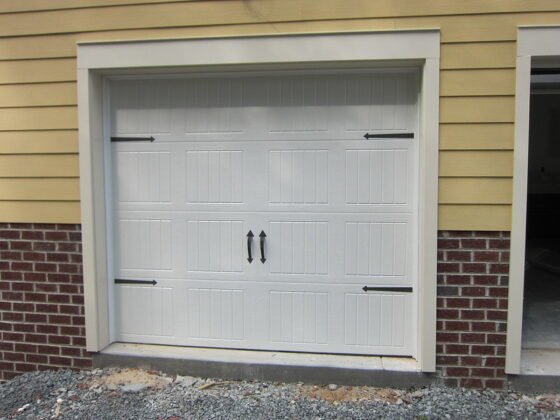Hello, nice place to work. The monitor stand today is not only super functional and practical, but it also provides a beautifully tidy desk.
Somehow, I had already gotten used to my old monitor riser, or rather, the book wrapped in gift paper. But somehow that wasn’t the best solution.

Monitor Stand with Compartments for a Tidy Desk
My new monitor stand is super handy because there is enough space to put away the keyboard and mouse when I need to grab a pen and paper and need more space.
I was also able to set the height exactly as I need it for my ergonomic working position. The back is open. This way I can route my camera USB cable through the compartment from the back and hide it there until I need it.
Monitor Stand
- Wooden board cut to size (2 times: 60 x 20 cm, approx. 1.5 cm thick boards
- Wooden slat cut to size (3 times: 5 x 20 cm; approx. 1.5 cm thick slat)
- wood varnish
- paintbrush
- sandpaper/grinder
- wood glue
- 3 glue clamps
- ruler/ruler
- pencil
- duster
- Handkerchief
Monitor Stand – How it Works
If you can have the wooden parts sawn at the hardware store, then the whole DIY is pretty quick and not difficult. You don’t need to have a lot of manual skills for this DIY.
The whole thing consists of two boards, a bottom board, a top, and three small wooden slats that determine the height of the monitor stand.
Before assembling, I lightly sanded all edges and corners to keep the stand from splinters or sharp and unsightly edges. So, take your time and sand the corners a little more bluntly. Then dust the boards with a cloth.
Now lay a board on the ground and place the three spacers straight on this board. Two spacers go to the outside on the left and right. I placed the third one slightly decentralized, creating a compartment about 31 cm wide for my keyboard. Mark the edges with a pencil.
Then apply the wood glue to the underside of the three spacer bars and place them in the desired position. You can wipe off any excess glue with a handkerchief.
Then smear the top of the three beams with glue and carefully place the second board on top. Now fix the boards with three glue clamps. It is best to place the stand at an angle over the edge of a table so that the glue clamps can be attached. I parked them around the corner on a railing.
Let the whole thing stick for at least an hour. But I didn’t unscrew the clamps myself until the next day. If you are worried about the stability, you could screw a few more screws through the underside into the spacer boards.
My monitor stand feels pretty solid and firm though. That’s why I renounce it. The boards on which the top rests are 1.5 cm thick and 20 cm long, making the stand very stable.
Now you can paint your monitor stand. Of course, you can also paint all parts before gluing and then brush over the glued areas again afterward. The order doesn’t matter.









